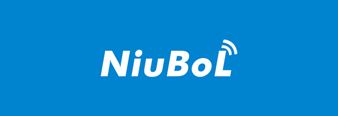

 咨询热线 15388025079
咨询热线 15388025079 时间:2021-12-26 10:47:54 浏览量:791
The design of NB-IoT network has the following characteristics:
Ultra-low power consumption: With the addition of the PSM function, the current consumption of the terminal in this mode is about 3uA, even if the dry battery is used, the module can be driven for 10 years;
Massive connections: The 180KHz bandwidth of a single cell can support 100,000 user access, which is thousands of times the number of LTE connections;
In-depth coverage: NB-IoT supports three CE Levels (coverage enhancement levels) of 0, 1, and 2, corresponding to the signal attenuation of 144dB, 154dB, and 164dB. Compared with GSM and LTE, it has increased by 20dB and the coverage area has increased by 100 times. , NB-IoT can provide deeper coverage under the same conditions;
Ultra-low cost: Reduce the manufacturing difficulty and cost of the terminal by simplifying the protocol and removing functions that are of little significance to the application of the Internet of Things. It has been reduced to less than 3 US dollars at present, and can be reduced to less than 1 US dollars in the future;

Upstream-oriented: Unlike traditional cellular networks that connect people with “people”, the Internet of Things is mainly about “things” applications and upstream data. Therefore, the traffic model of NB-IoT is dominated by the above behaviors;
Low rate: In LPWA application, multiple transmission control parameters, small data volume, low communication frequency, and insensitive delay, so the NB-IoT network relaxes the business delay to 10s;
Half-duplex: NB-IoT uses FDD mode, and uses half-duplex for communication. The cost of components required for half-duplex is lower, and power consumption can be reduced, further reducing the cost and power consumption of the terminal ;
ST/MT two modes: Single Tone (single frequency) mode, can provide business transmission services for more users at the same time, can provide uplink transmission rate of about 15kbps; Multiple Tone (multi-frequency) mode can make full use of spectrum resources , Improve user transmission rate, can provide users with an uplink transmission rate of about 62kbps; NB-IoT uplink supports two sub-carrier spaces 3.75kHz and 15kHz, of which it must be 15kHz in MT mode;
上一页:NB-IoT协议介绍
下一页:modbus网关的作用及特点
相关推荐
相关产品